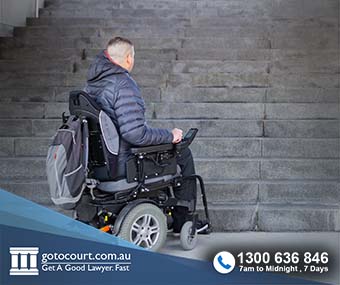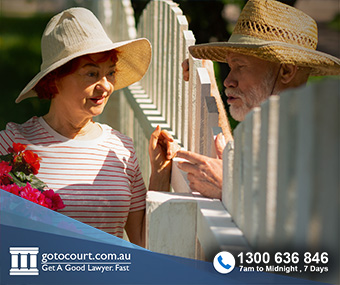Neighbourhood Disputes (SA)
Disagreements that arise between neighbours can often be resolved informally, by talking to your neighbour and letting them know how their actions are affecting you. When it is not possible to resolve a neighbourhood dispute face to face, there are various procedures that can be followed to let your neighbour know that action is required by them and if necessary, compel them to do certain things. This article outlines the processes that exist in relation to some of the most common neighbourhood disputes.
Trees
When neighbourhood disputes arise in relation to trees, this is covered by the common law of nuisance. Landowners are responsible for damage caused to adjoining property as a result of trees that are overhanging the boundary. To hold a neighbour responsible for such damage you must be able to show that they knew or should have known that the tree or branch was in a dangerous condition. If you are aware of a tree that is likely to drop branches or cause damage, you should draw this to your neighbour’s attention in writing.
If a neighbour’s tree is overhanging your property, you may remove the overhanging part of the tree or plant. However, you may not enter the neighbour’s property in order to do this without their permission.
Fences
The erection and maintenance of fences in South Australia is governed by the Fences Act 1975 (SA). The act sets out the procedures for dealing with neighbourhood disputes relating to fences. It ensures that when a landowner is seeking to construct, repair or upgrade a fence, they give adequate opportunity for the neighbour to raise issues relating to the need for the construction, the nature of the construction or to make a counter-proposal.
If a person in SA wants to put up a fence, replace a fence, or repair a fence, they may serve the adjoining landowner with a Notice setting out their intentions. The Notice must set out the nature and location of the work, its costs and the amount required to be contributed by the adjoining landowner.
If an adjoining landowner objects to the proposal set out in a Notice, they may serve a Counter-Notice within 30 days of the Notice being served, setting out their objection. If no Counter-Notice is served, the adjoining landowner is taken to have agreed to the proposed work.
Section 12 of the Act empowers the court to make Orders determining issues arising from fencing proposals where a dispute has arisen.
Noise
There are laws in place that set the maximum noise level that is acceptable for various types of domestic activity at certain times. For example, fixed domestic machines such as air conditioners may only emit a maximum of 45 decibels between 10pm and 7am. Neighbourhood disputes about domestic noise are best resolved informally, by talking to the person responsible directly or inviting them to mediation.
Complaints about noise that cannot be resolved through mediation are generally dealt with by your local council. A complaint relating to noise resulting from a facility authorised under the Environment Protection Act are made to the Environment Protection Authority.
Dogs
The responsibilities of dog and cat owners is regulated in South Australia by the Dog and Cat Management Act 1995. The act empowers the council to make various orders in respect of dogs and cats if they cause particular problems, such as excessive barking, or attacking people or animals.
Under the Dog and Cat Management Act, a dog owner commits an offence if their dog causes a nuisance by persistently barking to the extent that it interferes with the peace, comfort or convenience of a person. Barking is persistent if it continues for a period and recurs most days or several times a day. Barking interferes with the peace and convenience of a person if it affects their ability to do normal tasks such as sleep or talk on the phone.
The council may issue a Control (Barking Dog) Order if satisfied that a dog’s barking is causing a nuisance. Such an order requires the dog owner to take all reasonable steps to stop the behaviour occurring and that the dog or the person or both undertake a specified training course.
The council may issue a Control (Dangerous Dog) Order, a Control (Menacing Dog) Order or a Control (Nuisance Dog) Order if a dog is dangerous, menacing or a nuisance and has attacked, harassed or chased a person.
If you are experiencing any of these problems with a dog in your neighbourhood and the issue cannot be resolved directly with the dog owner, you can lodge an application with your local council. The council will investigate the matter and make an order if there is sufficient evidence to do so.
If you require legal advice or representation in relation to neighbourhood disputes or in any legal matter please contact Go To Court Lawyers.








